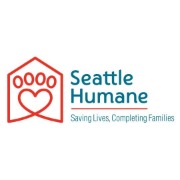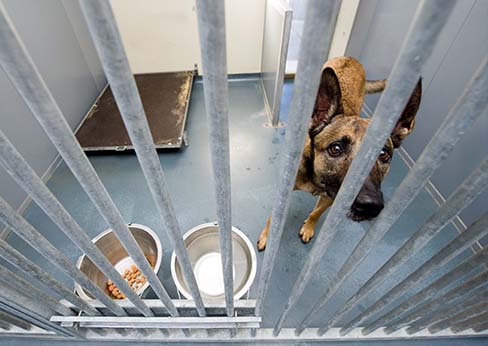You have so many options when it comes to where you are donating your money to – people, animals, veterans, environment. You also have many choices where you are getting your new dog from – rescue, shelter, breeder, online (please don’t!). It can be quite overwhelming.
The goal of this article is to help you guide your decision making between kill and no-kill animal shelter.
Charity Watch
“America’s most independent, assertive charity watchdog”. They rate every charity. Check them out. I think you will be surprised to see where some of these charities spend their money … hopefully, this can guide you when it comes to your donations.
What you are about to read might make you mad, really mad at us. Before you write that email though, please realize that we are just trying to paint an unbiased picture that shows all the facts. There are some fantastic no-kill shelters and there are some amazing kill shelters. The content below is not a blanket statement of all shelters.
Deconstructing Misnomers
Let’s clear up a common misconception: no-kill shelters still euthanize animals.
The difference between a kill and no-kill shelters is the 90% rule: 90% of all animals must leave the shelter alive. Or, only 10% of all animals which leave the shelter may do so through natural death or euthanasia.
90% must leave alive. This sounds great, right? Such a high success rate must mean that no-kill shelters do a better job compared to their kill-counterparts? Not necessarily:
- No-kill shelters are often filled to capacity in order to comply with their no-kill designation. Therefore, no-kill shelters have a choice when deciding which animals to admit – a lot of the time, they turn a lot of animals away, making them go to the “kill shelter” which are not allowed to turn animals away.
- No-kill shelters may refuse to admit animals which they perceive to be dangerous or unlikely to be adopted. Kill-shelters, while they may choose to take the animal into their care, may ultimately decide to euthanize the animals if their temper cannot be controlled or they have a low likelihood of adoption. Arguably, this saves the animal from a low-quality of life.
- Although the no-kill designation implies euthanasia, kill-shelters may lose their no-kill label for taking in animals which die of natural causes – causes out of the shelter’s control. For example, an animal that dies of kidney failure is counted with a euthanized animal against a shelter’s no-kill status.
- The exclusivity of no-kill shelters may result in kill-shelters needing to euthanize some of their weaker animals to make room for animals rejected by no-kill shelters.
So how do you choose …
The obvious: Every Dog You Rescue Is One Less Dog To Put Down!! If you are only adopting dogs from a so-called “no-kill” shelter and a local “kill” shelter is getting filled up, they will have to start euthanizing their animals.
Instead of looking at labels, look at the shelter itself. Are they actually trying to help animals? What are they doing before they turn to euthanasia? Sometimes, the “kill” shelters are better at caring for their dogs than “no-kill”.
“Look at what they are doing, look at their animals and say “is this worth my advocacy” because that is our time and time is a resource. And are they are worth my dollars? To me, that is much more of a better judgment of how to donate your money or where to adopt from than just that definition. You should go into your own investigation about what they do for their animals how did they care for them and what did they try me before euthanizing an animal and what kind of animals are they putting out there in terms of the world.” – John Griffin
No matter what, STAY LOCAL
Although national organizations generally have greater notoriety and household recognition, consider supporting a local shelter closer to home. Here’s why:
You know the money is going to help the animals!
Supporting a huge national organization might seem like a wonderful thing to do, and it usually is. However, many large organizations misuse the funds and only give a small percentage of the donations back to saving animals. Besides operational costs and administrative salaries, there are many instances where executives have misused funds and donations for personal gains. We won’t mention names, but one particular organization has an annual budget of $100 million but only allocates 0.8% of that budget to grants for shelters. Budgets at local shelters may be smaller, but they are more transparent and beneficial to the animals than their national counterparts.
Shelters help us learn and grow!
Your local shelters and rescue groups have educational programs in place to better educate the community about animal welfare. Just like your local bakery or mom and pop store, these local shelters are engrained in the community. Their educational opportunities are personalized for the towns they serve, which is a significant benefit for local owners.
Local shelters can better help you find your new best friend!
Local shelters are more familiar with the people and the community to whom these animals are being adopted. So, they are able to make better and more personal connections. Employees and volunteers are often members of the towns the shelters serve, and so the relationships extend to include the shelters, the animals, and the future pet-owners.
Shelters keep the communities healthy!
Your local shelter is not just a place to keep unwanted pets, it also enforces animal welfare laws that keep unwanted animal populations down and help keep the city from diseases like rabies. Further, local shelters will have direct insight unavailable to larger, national organizations, purely because of the size of the populations served and the intimacy of local relationships.
You are supporting your community!
Ultimately, you are playing a huge part in your community. The money goes to a local shelter or rescue and you can see your money or donations at work at a local level. You know where your money is going, and the results are much faster, more personal, and actually tangible compared to national fundraising drives.
Ultimately, any donation to an animal shelter provides some benefit for the animals the shelter serves. Before choosing a shelter to support, you should launch your own investigation to find out what a shelter is doing to care for its inhabitants and the community-at-large. Your support is a statement, so find a shelter you can stand behind.

Special thanks to:

John Griffin
John Griffin is the director of shelter services at Women’s Animal Center in Bensalem, PA. They are committed to the humane and compassionate treatment of animals and are distinguished as America’s First Animal Shelter. John also volunteers his time with Big East Akita Rescue providing behavior evaluations and transports for homeless Akitas found or surrendered in the greater Philadelphia region.

Women’s Animal Center: America’s First Animal Shelter
Founded in 1869 Women’s Animal Center is an open-admission shelter helping pets and their owners in Lower Bucks County and far Northeast Philadelphia. WAC takes in approximately 3,000 animals a year through the animal shelter with a live release rate of over 90%. WAC operates a full-service veterinary hospital whose services include; surgery, routine vaccines, x-rays, ultrasounds, and dental care.

Seattle Humane: Saving Lives, Completing Families
Seattle Humane promotes the human-animal bond by saving and serving pets in need, regardless of age, ability, circumstance, or geography. Seattle Humane is Puget Sound’s leader in animal adoption, education, and welfare. Their top priority is to connect animals in need of rescue with the people who will love them. Through their outreach, advocacy, and services we strive to ensure that animal companionship is accessible to all.





